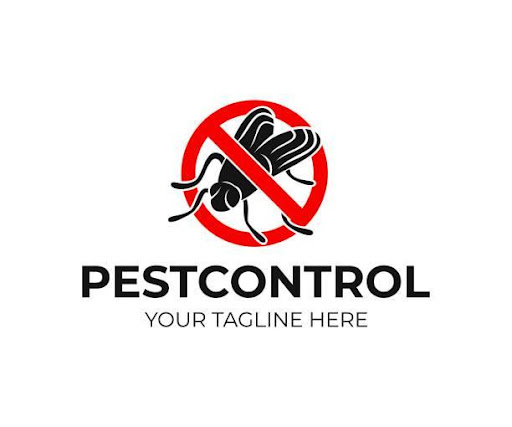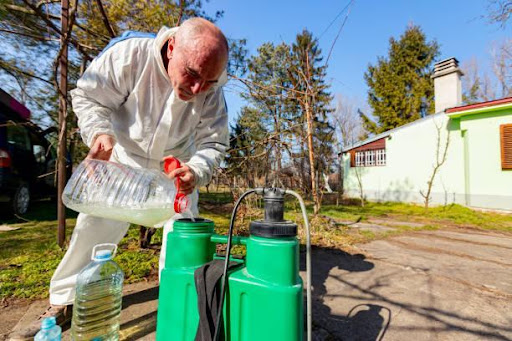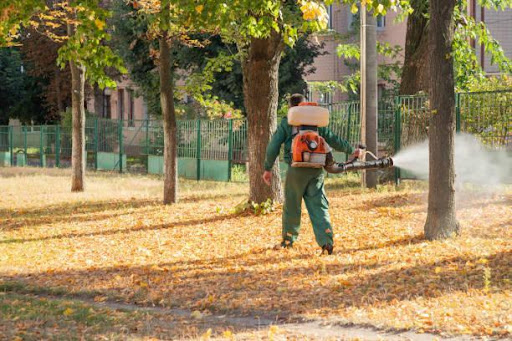Seasonal Pest Control Tips For Utah’s Ever-Changing Climate

Utah’s climate constantly changes, creating new pest control challenges for homeowners. I spoke with Brandon Poole, owner of a Utah pest control company, about how to stay on top of seasonal pest control in an ever-shifting environment.
“With Utah’s wide variety of climates, from mountains to deserts, pest pressures are always evolving,” Poole explained. “What worked for pest control last year may not be as effective this year.”
According to Poole, the key is paying attention to seasonal shifts and being proactive. Here are his top tips for pest-proofing your home through the changes ahead:
1. Spring Pest Prep
As the snow melts in Utah, pests start becoming active again. Poole of Utah pest control company said spring is the time to get ahead of potential problems.
“It’s crucial to inspect your home in spring and seal up any cracks or gaps where pests could enter,” he advised. “This includes sealing exterior walls, weather-stripping doors and windows, and repairing damaged screens.”
He also recommends clearing debris and vegetation at least 2 feet from your home’s foundation. This denies pests the shelter and shade they seek. Trimming bushes and tree branches also create less access to roofs and upper levels.
2. Summer Pest Prevention
Summer’s warmth accelerates pest breeding cycles. Poole said this makes pest exclusion an even bigger priority.
“Inspect all packages and grocery items for signs of pests when bringing them indoors,” he suggested. Shake out clothing and towels that have been drying outside, too. Installing door sweeps and sealing gaps around utility lines also helps stop pests from sneaking inside.
Poole also stressed the importance of cleaning up food spills immediately and taking out the trash regularly in summer. “The warmer temperatures cause food and organic waste to decompose more rapidly, which can attract pests to your home,” he explained.
He recommends keeping trees, shrubs, and wood piles away from the home’s exterior. “Carpenter ants and termites are more likely to nest in moist, decaying wood during summer,” said Poole.
3. Fall Pest-Proofing
According to Poole, fall is a critical time to be pest-proof before the cold hits.
“As temperatures drop, many pests look for warm shelter inside homes,” he said. Cracks around windows, doors, and foundations offer an inviting entry point.
Poole suggests examining your home’s exterior sealants and weather stripping. Make any necessary repairs to close gaps. Installing door sweeps and sealing utility openings also helps block access.
He also advises pruning back vegetation touching the home’s exterior. Remove piles of dirt, mulch, or rocks far from the foundation, as these can harbor pests.
Be vigilant about cleaning up crumbs and spills that provide food sources: store bird seed, pet food, and human food in sealed containers to avoid attracting pests.
“Getting ahead of fall pest pressures reduces the chances of dealing with major indoor infestations through the winter,” explained Poole.
4. Winter Pest Diligence
Utah winters won’t stop pests completely, according to Poole. Their activity slows down.
He advises continuing pest inspections and exclusion efforts through the cold months. Search for rodent droppings or termite mud tubes. Listen for scurrying or scratching in walls. Watch for stains or odors that signal pest invasions.
“Sealing cracks and crevices remains important in winter, too,” said Poole. “Pests still seek out the warmth of indoors, so blocking their entry points is key.”
Make sure attics, basements, and crawl spaces stay clutter-free, too. “These are common overwintering sites for pests,” warned Poole. “Keeping them clean and dry removes shelter.”
5. When To Call The Pros
DIY pest inhibition can go a long way. But Poole said knowing when to call a professional is essential, too.
“If you suspect a major pest infestation, have recurring invasions, or see signs of substantial pest damage, contact a licensed pest control company immediately,” he advised.
Professionals have the tools and treatments to eliminate current infestations at the source. They can also identify cracks, holes, and other entry points needing sealing.
“Trying DIY pest control methods for too long can allow the problem to get out of hand,” cautioned Poole. “Seeking professional insight quickly can stop pests in their tracks.”
6. Consistent Vigilance Is Key
Utah’s diverse and shifting climate keeps pest control on its toes. As the seasons change, so do the vulnerabilities in your home’s defenses.
Poole emphasizes being proactive and detail-oriented at all times of the year. “Your diligence and decisiveness make a big difference in preventing pest infestations,” he said.
Keep an eye out for pest entry points inside and out. Take steps like sealing cracks, clearing clutter, and contacting professionals promptly when needed. Consistent vigilance gives you an advantage over seasonal pests.
Conclusion
Utah’s variable climate brings ever-changing pest control challenges. Being proactive, vigilant, and decisive is key to protecting your home year-round. Regularly inspect the inside and outside of your home for vulnerabilities. Seal up cracks, clear clutter, and prune vegetation promptly to deny pests access.
Implement preventative DIY tactics, but don’t hesitate to call professional reinforcements. Consistent diligence, swift action, and adaptive solutions will aid you in staying one step ahead of seasonal pests. With the proper prevention approach for Utah’s climate, you can outsmart problems and protect your home all year long.
-
Personal Finance8 months ago
How Do I Find My UCAS ID Number?
-
Success6 years ago
Consistency: The Key Ingredient to Success
-
Uncategorized8 months ago
What Does Conditionally Approved Mean For An Apartment?
-
Motivation3 years ago
How To Become a More Organized Person?
-
Others4 years ago
Work Health and Safety: 8 Reasons to Maintain a Clutter-free Office
-
Entrepreneurs4 years ago
Why Diversity is Key in Business Marketing
-
HK Pools8 months ago
The HK Pools Forum Comunity Jos Markotop 2D Warna Kuning – A Great Way to Stay Connected
-
Sport1 year ago
What Makes Soccer Betting So Great?






























